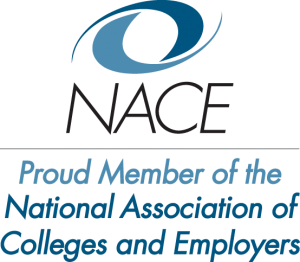4 Ways to Supercharge Student Orientation
Orientation to college is one of the most critical factors in setting students up for success–and, as anyone who’s tried to plan even part of a student orientation knows, it’s no easy task.
Now more than ever, the transition from high school to college requires intentional guidance. Today’s college students are extraordinarily diverse–which means that their levels of readiness for the academic and social aspects of college can vary greatly.
New student orientation is a critical moment in the student journey. In that moment before new students begin their college careers, they are ready–and eager–to absorb the information they need to succeed in the coming years. At the same time, it’s easy to overwhelm new students with the sheer amount of information that’s thrown at them in those early days. Below, you’ll find five ways to avoid information overload while helping your students get the most out of orientation.
When orientation is nothing but a series of transactions, students’ attention will start to wander–and you’ll miss out on a prime time to begin meaningful conversations. See more from our blog via @Pathway_U:Click to Tweet1. Start the orientation process early.
More and more schools are beginning the orientation process well before students arrive on campus. There are multiple benefits to beginning orientation early. Not only can you spread out the information that needs to be communicated, but you can also use pre-orientation communications and activities to combat summer melt from your incoming class.
This can also be an ideal time to involve families in the process. Virtual information sessions and activities and communications through email, social media, and regular mail can help families feel connected to the college orientation process, get their questions answered early, and encourage them to help their students complete pre-orientation paperwork and tasks.
2. Help students find their “why.”
It’s easy for orientation to feel like a series of checkboxes to be ticked. And in some cases, that’s fine–some pieces of orientation are transactional in nature, and simply require the student to complete a task for enrollment purposes.
But when orientation is nothing but a series of transactions, students’ attention will start to wander–and you’ll miss out on a prime time to begin meaningful conversations.
Add some purpose into new student orientation by helping students find their “why.” Why are they in college? Why did they choose this college? What are they hoping to get out of the next four years?
PathwayU can be a useful tool for beginning these conversations. By helping students reflect on their personal interests and values during orientation, you’ll be setting them up to view college as much more than a transactional experience. Instead, they’ll understand that college is a time for personal reflection, growth, and purpose-making–thus setting the stage for success as they begin their college career.
3. Connect the dots early and often.
Orientation is the perfect time to help students connect to campus resources that will serve them throughout their time as a student. From the library and academic support, to career coaching, to student and residence life and beyond–this is the moment to help students identify the people and places who can help them succeed.
But just throwing out a list of offices and their contact information isn’t nearly enough. Students need to understand how and why they would use these resources.
One way to help students retain and connect to information about campus resources is to make it intensely personal. And if the student has completed the PathwayU assessments as a part of orientation, helping them connect the dots between their own college path and the resources available to them can be much easier.
We all retain information better when we understand how it impacts us personally. Help students plan their college path forward by identifying the campus resources and offices that will help them explore their interests and achieve the goals they’ve begun to identify for themselves through PathwayU.
From the library and academic support, to career coaching, to student and residence life and beyond– #Orientation is the perfect opportunity to help students identify the people and places who can help them succeed. Find out more via @Pathway_U:Click to Tweet4. Model collaboration.
Collaboration is a buzzword in higher ed–but it’s important to make sure your college is walking the walk, especially when it comes to orientation. A truly comprehensive and effective student orientation is going to involve every department on campus–from admissions to IT, career services to residence life, financial aid to academic support services. Work together with your campus partners to identify the overarching goals of orientation, and ensure that each department’s piece of orientation fits seamlessly into the orientation program. This will help students see their college experience as a cohesive whole, rather than a tangled mess of disparate parts.
A common thread: Purposeful lives
Every office and department involved in orientation is working toward one single, final goal: to prepare new students for success in college. Although each office works on a different piece of that puzzle, every office is interested in seeing students make the most of their time in college.
Offer your students the opportunity to explore their interests and goals during orientation, and you’ll ensure that they begin college thinking about the ways the next four years will prepare them for a life and career of purpose. And that, of course, is the ultimate measure of student success.
PathwayU contributor Jen Gose has worked in higher education for eight years, including in career education at a small liberal arts college for over five years.
-1.png?width=288&height=67&name=PathwayU_PGLogo%20(1)-1.png)











